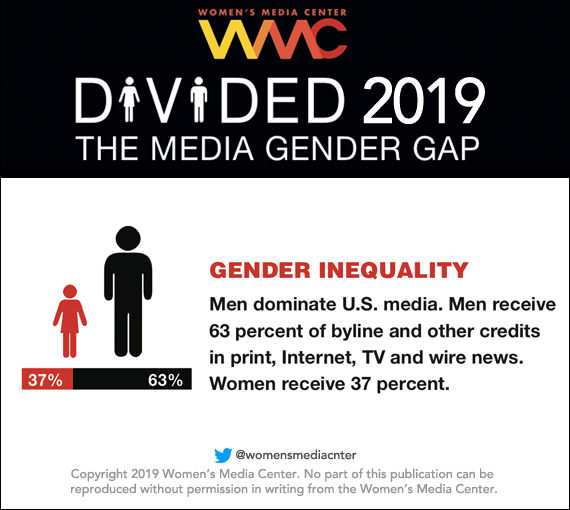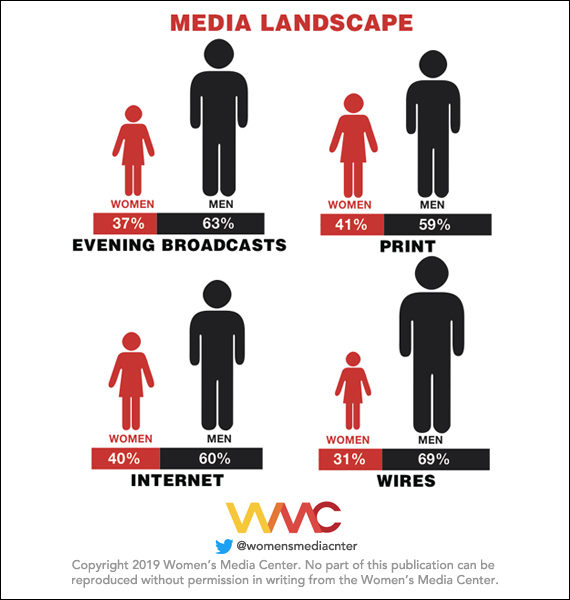What will it take for news organizations to realize women’s voices matter? It’s the question resounding in the wake of new research from the Women’s Media Center (WMC) which found that, across all platforms, men receive 63 percent of bylines and credits, and women receive only 37 percent.

“Divided 2019: The Media Gender Gap” marks the WMC’s latest biannual assessment of women’s standings as media writers, reporters, correspondents and anchors in news media. Unfortunately, their findings have remained largely stagnant since their first report on the same topic in 2017.
“The media is in a state of great disruption, but despite all the change, one thing remains the same: fewer women report the news than men,” Julie Burton, President of the Women’s Media Center, said in a statement. “Media tells us what is important and who matters, and the message is clear where women stand.”

This year, the largest gender gap was spotted in newswires, where a whopping 69 percent of bylines were snagged by men and only 31 percent by women—the biggest disparity in news media. Prime-time television news, however, come in for a close second: 63 percent of such broadcast programs feature male anchors and correspondents, and only 37 percent feature women.
Over the last year, the gender gap narrowed at ABC, CBS and NBC—where disparities between men and women had previously been more glaring than in other news sectors. But WMC’s latest research is a sobering reminder of how far women have yet to go to make sure they are visible and powerful in the media.
“When we watch the evening news, we’re not seeing an America that truly reflects all voices,” Pat Mitchell, Co-Chair of the Women’s Media Center, said in a statement. “Too often, the voices we hear and the images we see are men. Men largely are reporting and telling the story even though women represent more than half the U.S. population.”
The research also found that the beats on which women and men report reflect the media industry’s sexism: Overall, men overwhelmingly dominate sports coverage, while women are more likely to report on lifestyle and leisure.
The numbers are even more dismal when accounting for race gaps in media representation. A 2018 WMC study found that just 7.95 percent of print newsroom staff positions, 12.6 percent of local TV news staff positions and 6.2 percent of local radio staff positions in the U.S. were held by women of color.
“A cultural, systemic shift is necessary if U.S. media is to achieve gender parity,” Burton added, “and move toward a world where stories fully represent the voices and perspectives of women.”





